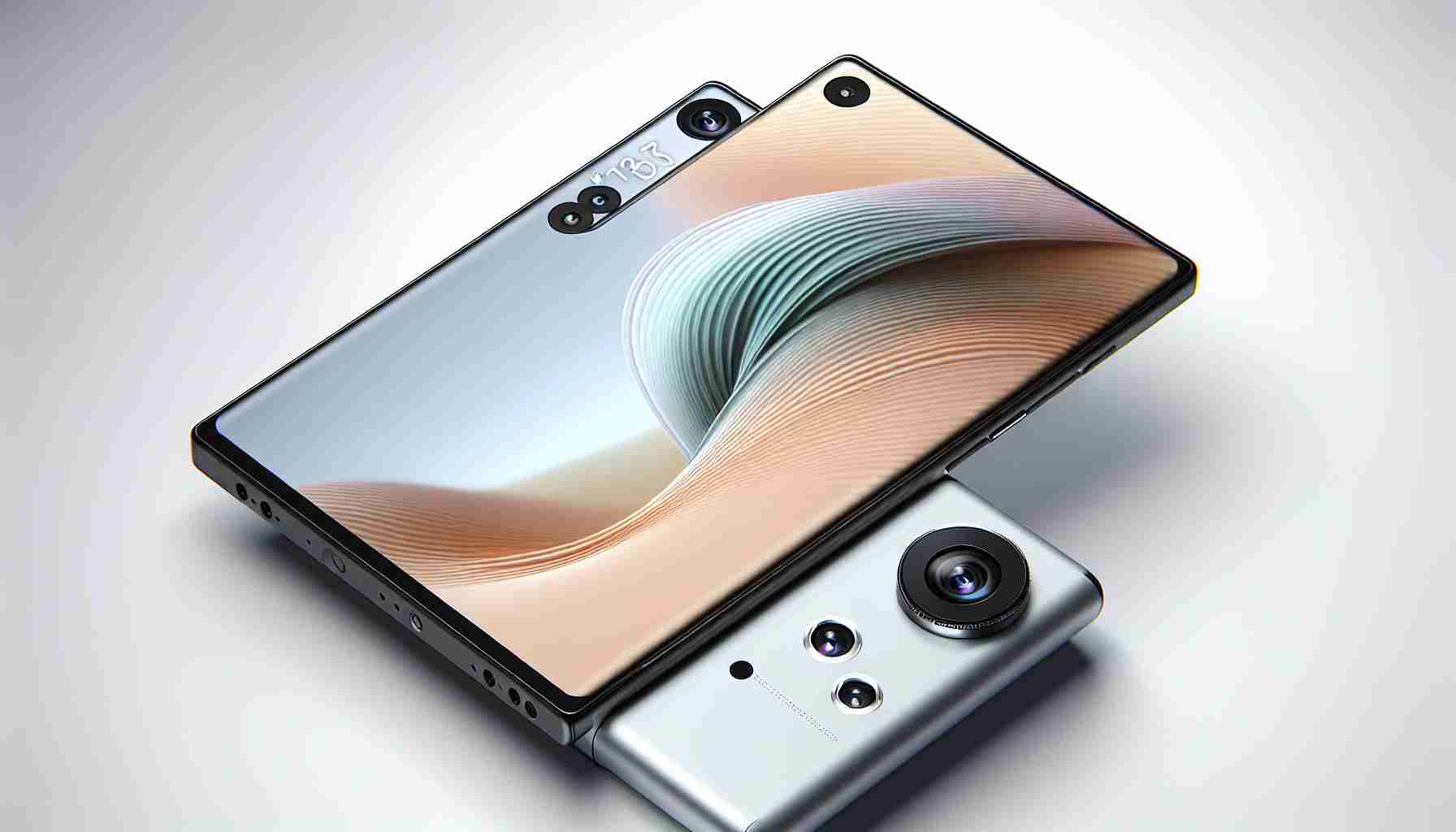The Vivo V30 Pro has emerged as the latest contender in India’s mid-premium smartphone market, flaunting its photographic prowess with Zeiss-coordinated lenses. The triple camera setup is garnished with a 50-megapixel sensor for each, offering ‘Zeiss Style Bokehs’—a feature promising to replicate the deep, soft backgrounds typically seen with high-end Zeiss optics. While introducing Zeiss-branded cameras to the V series for the first time, Vivo confidently pairs them with a price reflective of middle to high-end devices. Our in-depth examination will determine if the Vivo V30 Pro justifies its cost and stands tall amid stiff competition.
Vivo V30 Pro: A Stylish Powerhouse
The Vivo V30 Pro arrives in two hues for the Indian market: the lustrous Andaman Blue and the classic, fingerprint-resistant Classic Black. These colors are particularly striking when viewed upon the smooth curve of its glass back, which is intended to mimic the Andaman and Nicobar Islands’ serene waters. The phone’s overall design is a nuanced evolution from its predecessor, with the most notable change being a square aura light adorning its rear. What’s more, the phone’s construction ensures stability on flat surfaces, avoiding that annoying wobble thanks to its broad camera module.
Subtle Yet Sophisticated
Though quite svelte at 7.45 mm thick, the Vivo V30 Pro feels robust, housing a hefty 5,000mAh battery. A curved-edge display melts seamlessly into the phone’s frame, lending to the device a bezel-less look while maintaining a comfortable grip. Despite the Vivo V30 Pro holding an IP54 rating, offering elementary protection from dust and liquid, comparably priced rivals boast of more formidable defenses against the elements.
Internals and Interface: Contemporary Tech with a Promise of Longevity
Underneath the surface, the Vivo V30 Pro is driven by the 4nm MediaTek Dimensity 8200 5G SoC—a chip slightly past its prime, yet competitive. Accompanied by up to 12GB of LPDDR5X RAM and 512GB of UFS 3.1 storage, this hardware permits the handling of two 5G sim cards but lacks microSD expansion. The Pro model arrives with an 80W charger for its substantial battery and maintains a svelte USB 2.0 Type-C port for charging and data transfer. Software-wise, it runs Funtouch OS 14 Global based on Android 14 and offers an in-display fingerprint sensor, though its reliability during testing was less than perfect.
Performance Insights and Gaming Experience
Benchmark testing revealed the Vivo V30 Pro’s performance to be competent within its segment, though it doesn’t shatter expectations in comparison to rivals like the OnePlus 12R. Gaming, particularly, is sufficient with titles like Asphalt 9: Legends and Call of Duty: Mobile performing adequately, displaying no significant overheating. The large 6.78-inch full-HD+ display contributes to an immersive gaming and viewing experience.
Camera Capabilities: The Vivo V30 Pro’s Main Attraction
The Vivo V30 Pro’s camera system is its standout feature, leveraging its triple 50-megapixel sensors. It promotes advanced photography techniques such as the Zeiss T* coating, which enhances light transmission and reduces reflections. Moreover, the device offers various shooting modes including Night Mode, Portrait Mode (with Zeiss-Style bokeh effects), and a Pro Mode for manual control over camera settings.
Important Questions and Answers Regarding the Vivo V30 Pro:
1. Does the Vivo V30 Pro offer good value for money? – The Vivo V30 Pro’s pricing puts it in the mid-premium segment; its value for money depends on an individual’s preference for camera performance over other specifications.
2. What are the alternatives to the Vivo V30 Pro in the same price range? – Alternatives may include devices from OnePlus, Xiaomi, and Samsung, which offer similar features but differ in camera technology, user interface, and overall performance.
3. How does the MediaTek Dimensity 8200 5G SoC in the Vivo V30 Pro compare to its competitors? – The MediaTek Dimensity 8200 5G SoC is a capable processor but may not rank as high as some alternatives like Qualcomm’s Snapdragon chips found in competing phones.
Key Challenges and Controversies:
– One of the challenges for the Vivo V30 Pro could be justifying its price point, especially when the market is filled with similarly specced and more affordable devices.
– Another controversy could involve the device’s environmental protection features, as the Vivo V30 Pro’s IP54 rating is relatively modest in comparison to other devices in its class, which might offer higher IP ratings for water and dust resistance.
Advantages and Disadvantages:
Advantages:
– Advanced camera system with triple 50-megapixel sensors and Zeiss optics.
– Elegant design with unique color options and a sturdy build.
– Large battery capacity with an 80W fast charging support.
Disadvantages:
– Lacks microSD expansion, limiting storage flexibility.
– IP54 rating is lower than some competitors, suggesting weaker resistance to dust and water.
– Dimensity 8200 5G SoC is not the latest processor and may be outperformed by competitors.
For users interested in exploring other smartphones or learning more about Vivo as a company, the main domain link to Vivo’s website is provided: Vivo.
In summary, the Vivo V30 Pro is a camera-centric device with a focus on design and photography features. While it offers solid performance, its valuation and non-expandable storage are potential drawbacks that customers must weigh against the phone’s photographic capabilities and stylish aesthetics.
